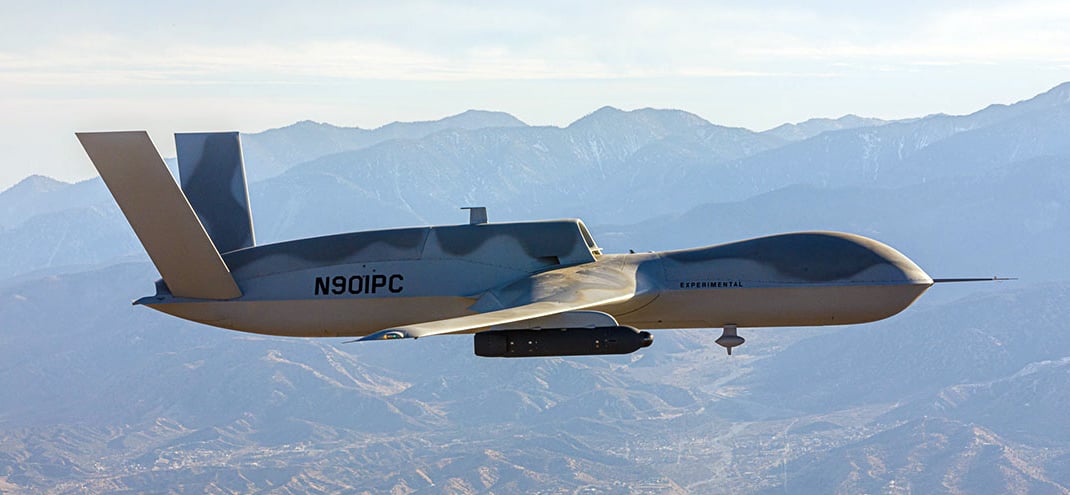Click Here to View This Page on Production Frontend
Click Here to Export Node Content
Click Here to View Printer-Friendly Version (Raw Backend)
Note: front-end display has links to styled print versions.
Content Node ID: 403508
General Atomics Aeronautical Systems Inc. (GA-ASI) has revealed that it has completed the development and testing of a self-contained anti-submarine warfare (ASW) package, the first such equipment for an unmanned aircraft system (UAS). The package comprises podded sonobuoy dispenser systems (SDS) and a sonobuoy management and control system (SMCS).
GA-ASI has been studying unmanned ASW capability for some years, demonstrating sonobuoy remote processing capability from an MQ-9A Reaper in 2017. Subsequently an SMCS has been added, and the SDS has been developed. It employs a pneumatic launch system, and each pod can carry up to 10 A-size sonobuoys or 20 G-size buoys.
On November 24 last year GA-ASI carried out a trial at the U.S. Navy’s Pacific range in which a company-owned MQ-9A Block 5 released seven SSQ-53G Directional Frequency Analysis and Recording (DIFAR) and two SSQ-62F Directional Command Activated Sonobuoy System (DICASS) sonobuoys, and a single SSQ-36B bathythermograph buoy. Using a General Dynamics Mission Systems-Canada UYS-505 processing system the trial successfully tracked an MK-39 expendable mobile ASW training target (EMATT) for three hours, data being relayed by a satcom link to the Laguna flight operations facility at the Yuma Proving Ground in Arizona.
The ASW capability is being developed for the SeaGuardian configuration of the MQ-9B SkyGuardian, which can carry up to four SDS pods under its wings. The SeaGuardian is intended to perform as a stand-alone maritime patrol asset or to act with traditional maritime patrol aircraft as part of a manned-unmanned team.

A key part of the SeaGuardian mission set is a surveillance radar, and GA-ASI is working with Leonardo to integrate the Seaspray 7500E V2 AESA radar into the UAS’s centerline pod. The radar offers a variety of modes, including inverse synthetic aperture radar that works with the automatic identification system (AIS, a form of maritime IFF) to provide accurate identification of detected surface targets. It can spot submarine periscopes and humans in the water during search and rescue operations. A high-definition optical/infrared full-motion video capability is also included. Another option from Leonardo is the SAGE electronic surveillance system.
GA-ASI reports that two undisclosed export customers have ordered the SeaGuardian capability, which was included in the recently approved request for up to 18 MQ-9Bs from the United Arab Emirates. In its standard SeaGuardian configuration the MQ-9B has an endurance of more than 18 hours and can mount an eight-hour patrol at a radius of 1,200 nm.
Another store that has recently been trialed by GA-ASI is the Legion Pod, in this case, the carrier being the company’s jet-powered Avenger remotely piloted aircraft. The Legion Pod, which is carried by F-15 Eagles, features a Lockheed Martin IRST21 infrared search and track sensor in its nose and datalinks to network the sensor and carrier with other platforms.
In early January GA-ASI was selected to support the U.S. Air Force’s Skyborg Vanguard program that is developing artificial intelligence/machine-learning autonomous capabilities for future combat aircraft. Two company-owned Avengers are being modified with updated links and the Skyborg System Design Agent software to support this activity, which will test the ability of manned aircraft to control the Avengers in flight and to pass critical mission information between them.
